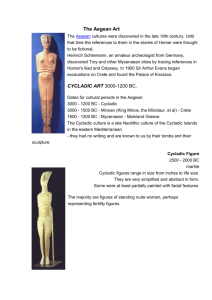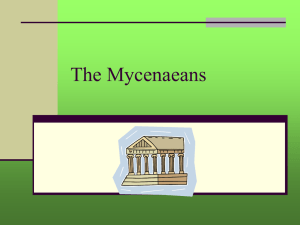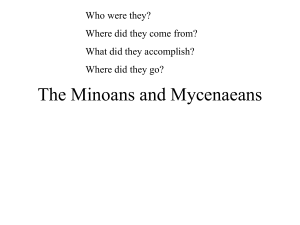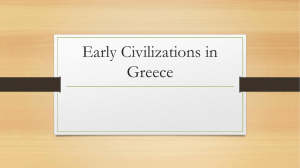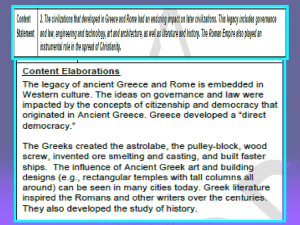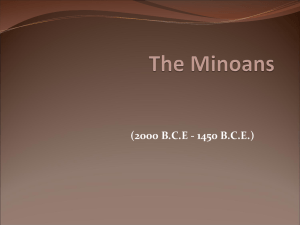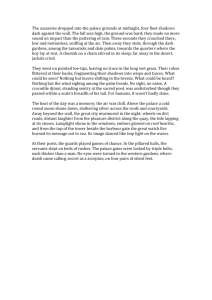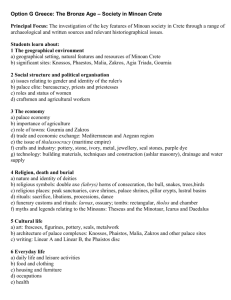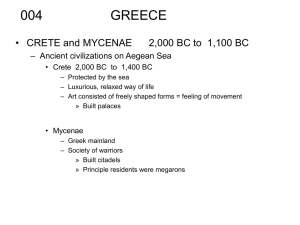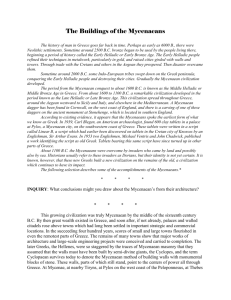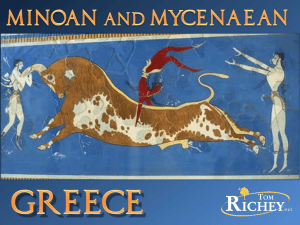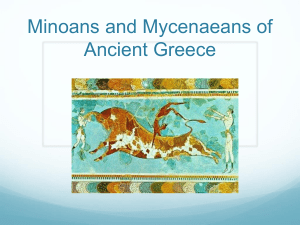Arch 1 Chapter 5
advertisement
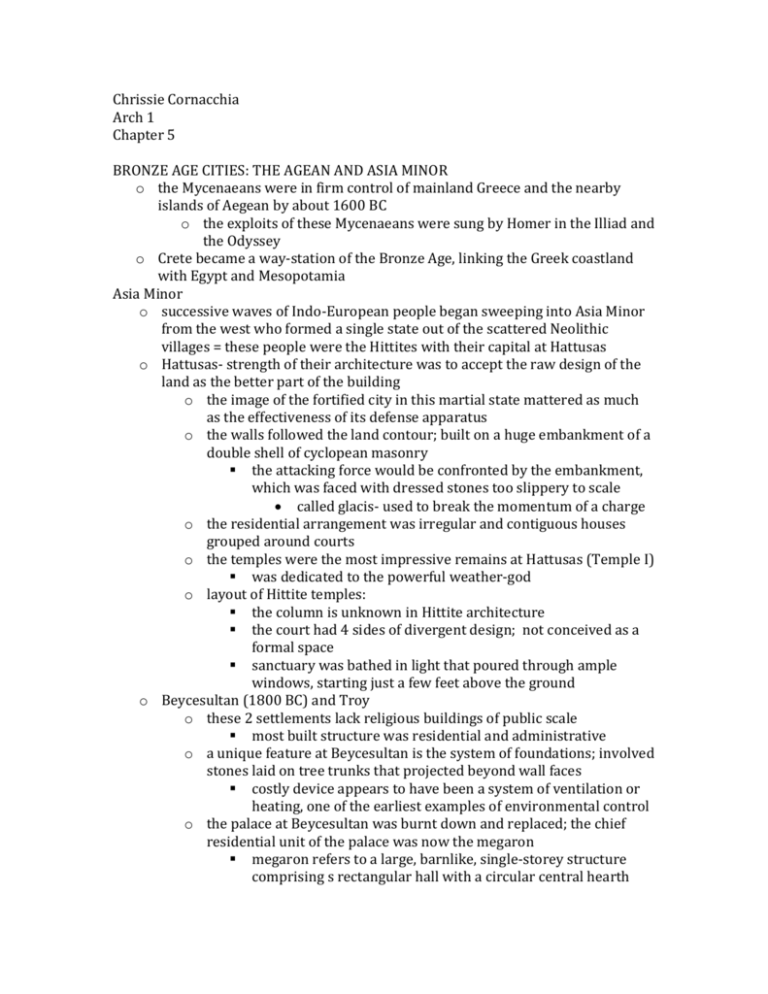
Chrissie Cornacchia Arch 1 Chapter 5 BRONZE AGE CITIES: THE AGEAN AND ASIA MINOR o the Mycenaeans were in firm control of mainland Greece and the nearby islands of Aegean by about 1600 BC o the exploits of these Mycenaeans were sung by Homer in the Illiad and the Odyssey o Crete became a way-station of the Bronze Age, linking the Greek coastland with Egypt and Mesopotamia Asia Minor o successive waves of Indo-European people began sweeping into Asia Minor from the west who formed a single state out of the scattered Neolithic villages = these people were the Hittites with their capital at Hattusas o Hattusas- strength of their architecture was to accept the raw design of the land as the better part of the building o the image of the fortified city in this martial state mattered as much as the effectiveness of its defense apparatus o the walls followed the land contour; built on a huge embankment of a double shell of cyclopean masonry the attacking force would be confronted by the embankment, which was faced with dressed stones too slippery to scale called glacis- used to break the momentum of a charge o the residential arrangement was irregular and contiguous houses grouped around courts o the temples were the most impressive remains at Hattusas (Temple I) was dedicated to the powerful weather-god o layout of Hittite temples: the column is unknown in Hittite architecture the court had 4 sides of divergent design; not conceived as a formal space sanctuary was bathed in light that poured through ample windows, starting just a few feet above the ground o Beycesultan (1800 BC) and Troy o these 2 settlements lack religious buildings of public scale most built structure was residential and administrative o a unique feature at Beycesultan is the system of foundations; involved stones laid on tree trunks that projected beyond wall faces costly device appears to have been a system of ventilation or heating, one of the earliest examples of environmental control o the palace at Beycesultan was burnt down and replaced; the chief residential unit of the palace was now the megaron megaron refers to a large, barnlike, single-storey structure comprising s rectangular hall with a circular central hearth o the Homeric city of Troy is believed to coincide with the 7th of the 9 layers (there are 9 superimposed cities on the site) o Mycenaeans and Minoans o the megaron dominated the palace complex of the Mycenaeans in size and determined its axis o Pylos: perhaps the most instructive Mycenaean palace is that of Nestor in Homer’s “sandy Pylos” Heinrich Schliemann- it was his discovery of the site and the gold treasures of its tombs that heralded the exposure of early Greek culture and the authentication of Homeric myth/history o Tiryns: construction of Mycenaean palaces was of rubble throughout, strengthened by a massive framework the defensive ring was built of cyclopean masonry the circuit at Tiryns comprised of 2 parts: the close for the commons to the north (entered by a gate through the lower town) and the palace enclosure (obstacle course) o Mycenae: occupies a hilltop; the position of the citadel commanded the sea approach form Crete and the south Aegean in general tholoi- beehive tombs; circular structures with corbelled domes of finely cut stone and an approach causeway (dromos) best known/finest beehive tomb is Treasury of Atreus o relieving triangle- reduce weight over the lintel first piece of large-scale sculpture from the Greek world is the Mycenaean’s Lion Gate entrance o Knossos: dug up by Sir Arthur Evans to give us detailed picture of their (Cretan) florid and literate design Greek city-states- polis had a network of streets; most were paved; topographically and functionally determined by retaining the dwelling patterns of the Bronze Age villages on the same site Gournia is best preserved layout; urban form is cohesive and logical just as the towns themselves were unwalled, so too the larger buildings, the royal palaces especially, were ordered toward the court Hittite and Mycenaean appreciation of natural contours was based on defensive genius the aim was to open up architectural form toward the prospects that befriended it the megaron is the largest element of composition and an axial approach toward it is set up which stiffens the general layout and creates a hierarchy of use that is unequivocal megaron- the king’s hall at which the gods are given hospitality the path at Knossos is not straight; the heart, if anything, is the all-purpose court could be described as a labrynth (word of Cretan origin) Throne Room of palace; had cult functions (because it was connected to the central court) Hall of the Double Axes- here the walls were decorated with frescoes of great “figure-eight” shields of bull hide and carvings of two-bladed axes, the sacred symbol of Minoan Crete called labrys The Closing of the Bronze Age o 1400 BC Knossos collapsed; inhabitants migrated inland or to Greece o Mycenaeans took over the (Minoan) area o Minoans may have been brought down by volcanic eruption
